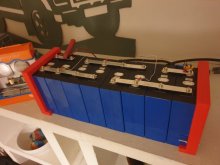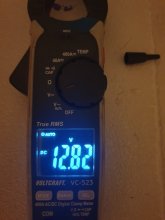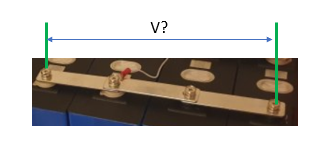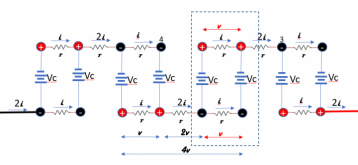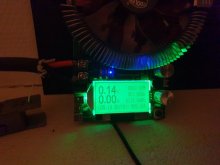I am interested also. On the other hand, since these are serial connections what assumption is being made about the voltage that the serial connection is carrying. Is it the voltage of the pack? If it is the pack voltage how significant is the voltage drop? My ability to apply Ohms law is a bit rusty.
I remember your earlier comment that the serial buss bars in your diagram should be place on the terminal post first and I will do that in my next reconfiguration. Since I will be fabricating my own buss bars, another option would be a single plate with four holes. Maybe a fifth hole for the BMS connection.
The picture is showing a 2P4S pack.
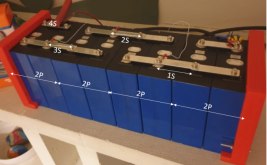
Each of those long busbars are providing a series connection and two parallel cell connections.
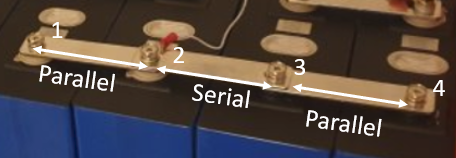
When the battery is under load current will be coming out of terminal one and going toward terminal 2.
Terminal 2 will also be supplying current so between terminal 2 and 3 you will get twice the current.
Terminal 3 is a negative post so half the current will go into terminal 3 and the remainder will go into terminal 4.
Edit: I see I have the neg and positive reversed from what is in the pic, but it does not really change the analysis.
(Why the H*@% do they make the positive post black?.....that just seems soooooo wrong)
There is resistance in the busbars and the connections between the bus bars, so there will be some voltage drop.
We can do a
first order approximation model of the circuit like this:
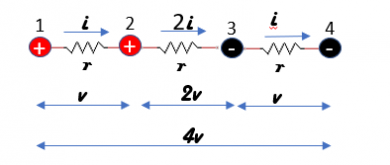
Voltage(v) = Current (i) x Resistance r
So the voltage between post one and 2 is v=i x r. Between 2 and 3 the voltage will be 2i x v or 2V. Between 3 and 4 the current is back down so the voltage is back down to i x r = v. Adding them all up, we get v+2v+v or 4V across the whole busbar.
Without going into the mind numbing details, with this model the voltage drop between two parallel cells is 2v (1v on each side).... but we don't know what V is and we don't know what r is so we can not calculate it. We can only make swags like I did in the previous post.
I don't currently have the cells on hand to measure it but since you have the set-up if you could measure it, we could get a feeling for the voltage drop and whether it is significant enough to worry about. It would also let us calculate an approximation of r so we can extend the model to longer busbars.
Once you have your home made bus bars, you can do the same experiment and see how big of a difference it makes to have a single big bar verses 3 smaller stacked bars.
Note: With zero current there will be zero voltage drop. The voltage drop will only show up under load.... for this experiment, the heavier the load the better.
Note: No big deal if you can't do it..... I'll do it with the next batch of cells I buy.



